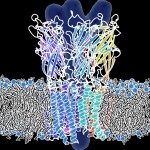Nucleic Acids and Molecular Biology vol. 3 pp 182-196
Considering the chemical similarity between DNA and RNA, one can only wonder at the different functions RNA performs. This is certainly due to its ability to adopt complex tertiary structures. Apart from a genomic role in some viruses, RNA is mostly involved in the machinery that expresses the genetic information from DNA to proteins. Important actors are messenger RNAs and transfer RNAs which play key roles during thé translation process. Ribosomal RNAs are major components of the protein synthesis machinery and their structure is actively studied (Moore 1988). The recent discovery that these RNAs are themselves formed by an RNA-mediated processing of their primary transcripts added a new dimension to these molecules. They can be more than substrates, e.g., co-factors or templates (Mowry and Steitz 1987) and can act as catalysts (Cech 1987). These new properties of RNA reshaped the field of evolution (Weiner and Maizels 1987). It is also probable that more functions have yet to be discovered.

